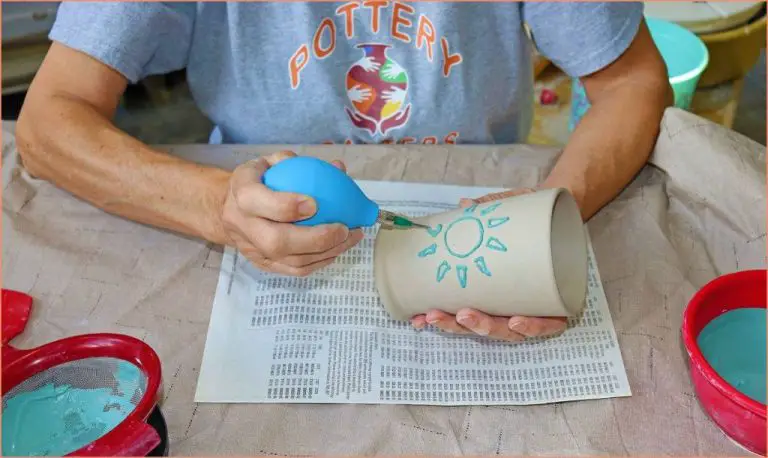How Do You Make A Silicone Mold For A Clay Sculpture?
Making a silicone mold of a clay sculpture allows you to reproduce the original sculpt in other materials like resin or wax. The process involves carefully preparing the original sculpture, mixing and pouring silicone over it to capture all the details, then de-molding the silicone and cleaning it up to use for casting copies. The main materials you’ll need are clay, silicone mold rubber, mold release spray, and a container to hold the liquid silicone as it cures.
This comprehensive guide will walk through every step of the process start to finish. We’ll cover tips for selecting the best silicone for your project, calculating how much you’ll need, proper mixing techniques, demolding, troubleshooting problems, and using your finished mold to make resin castings. With some preparation and care while working, you can create a flexible, reusable mold to preserve your sculpture and duplicate it exactly.
Selecting the Clay Sculpture
When selecting a clay sculpture to make a mold from, you’ll want to consider certain qualities to ensure the finished mold captures detail properly and lasts through many castings. Here are some key factors to look for in the original sculpture:
Level of Detail – The more intricate and detailed the sculpture, the more care needs to be taken when molding. Undercuts, crevices, and complex shapes can make demolding challenging. Simple, rounded forms are beginner-friendly.
Structural Integrity – Sculptures that are sturdy, without thin protruding pieces, will hold up better through the moldmaking process. Fragile sculptures may break when separating the mold.
Porosity – Highly porous, absorbent sculptures will lock silicone into their surface, making demolding difficult. Low-porosity clays are ideal.
Surface Texture – Smooth, non-sticky surfaces will release easiest from silicone molds. Avoid sculptures with tacky or ultra-smooth surfaces.
Moisture Content – Damp clay can inhibit silicone from curing properly. Allow sculptures to dry fully before molding.
Taking the time to choose an appropriate sculpture will lead to the best possible mold and castings.
Preparing the Sculpture
Before making the mold, the original clay sculpture must be properly prepared. This involves cleaning the surface and sealing it to prevent the silicone from penetrating the porous clay.
First, inspect the sculpture closely and use a soft brush to remove any loose clay particles or debris. Pay special attention to intricate details and undercuts where clay residue can gather.
Next, seal the surface using a clear acrylic sealant spray. Apply 2-3 thin, even coats, allowing each coat to fully dry before adding the next. The sealant will clog the pores in the clay and create a barrier so the mold silicone cannot soak in. Make sure to seal all areas thoroughly.
Once sealed, do a final inspection for any remaining dust or particles. Gently wipe with a tack cloth. Avoid touching the sculpture with bare hands at this point to keep oils off the surface.
The sculpture is now prepped and ready for mold making! Proper preparation is crucial for capturing all the detail cleanly in silicone.
Choosing a Silicone
When making a silicone mold, it’s important to select the right type of silicone for your sculpture and intended use. Here are some of the main options to consider:
Platinum-Cure Silicone – This is a high quality, durable silicone that can capture extremely fine detail. It has excellent tear strength and flexibility. Platinum silicone has a long working time, which allows you to thoroughly coat intricate sculptures before it sets. It also has excellent registration ability for multi-piece molds. The main downside is the high cost.
Tin-Cure Silicone – Tin silicone is more affordable than platinum versions. It can still capture fine detail and is commonly used for mold making. However, it has a shorter working time and lower tear strength. Tin silicone also can have some shrinkage over time. It may not pick up extremely fine details as well as platinum.
Condensation Cure Silicone – This is the most budget-friendly option but has some drawbacks. Condensation silicone can pick up decent detail from sculptures and is easy to use. However, it has short working and demolding times. The molds are not as durable as platinum or tin options. There is also some level of shrinkage over time.
For complex or valuable sculptures, platinum silicone is highly recommended to capture intricate details and make high-quality molds. For simpler sculptures, tin or condensation silicone can work well at a lower price point. Consider the level of detail needed, cost constraints, and longevity desired when selecting a silicone.
Calculating Silicone Amounts
To figure out how much silicone you’ll need for your mold, you’ll need to calculate the volume of your original sculpture. Here are the steps:
- Measure the length, width, and height of your sculpture in inches or centimeters. Make sure to measure at the widest and tallest points.
- Multiply the length x width x height to calculate the total volume.
- Check the instructions on your silicone container to see how many cubic inches or cm that amount of silicone will cover. Silicones often cover 25-30 cubic inches per pound or 400-500 cc per kg.
- Divide your sculpture’s volume by the coverage rate to estimate the weight/volume of silicone needed.
- Add 10-20% more silicone than calculated to account for spillage or air bubbles. It’s better to mix a little extra than to run short.
Estimating precisely how much silicone you’ll need takes some practice, but following these steps will get you close. Having extra silicone is better than not having enough to fully cover your sculpture.
Mixing the Silicone
Mixing your silicone is an essential step to ensure you get a durable mold with an accurate imprint of your sculpture. Follow the manufacturer’s directions closely when mixing your silicone. Most silicones are made of two parts, the base and the catalyst or curing agent, that must be mixed in the proper ratio.
Start by measuring out the exact amounts of base silicone and catalyst according to the ratio specified, using precise digital scales. Mix the two parts together thoroughly, scraping the sides and bottom of the container, until the mixture is completely uniform in color. Avoid introducing air bubbles by mixing slowly and deliberately. Use a disposable stick or spatula so you don’t contaminate batches. Mix only as much silicone as you can use at one time based on the working time.
Properly mixed silicone should have a smooth, homogeneous appearance free of streaks. Test a small amount to ensure it begins curing within the expected timeframe listed on the product. Improperly mixed silicone may not cure fully, ruining your mold.
Pouring the Mold
Once the silicone is thoroughly mixed, it’s time to carefully pour it over the sculpture to create the mold. This step requires patience and strategic pouring to avoid trapping air bubbles.
First, double check that you have applied a release agent over the entire sculpture and mold box. Any spots missed could cause the mold to stick.
Next, slowly pour a small amount of silicone into the lowest point of the mold box, allowing it to spread out in a thin layer. Tilt and rotate the mold box to help the silicone spread into crevices and cover the details of the sculpture.
Pour more silicone in a thin stream targeted at the higher points and vertical surfaces of the sculpture. Let it run down the sides, continuing to coat the surface. Move around the sculpture, pouring small amounts from different angles and watching the level rise.
Pause occasionally to give any trapped air bubbles time to rise to the surface and pop. Use a toothpick or skewer to break stubborn bubbles.
Keep pouring gradually, maintaining a thin stream instead of dumping large amounts. Make sure silicone reaches undercuts and recesses. Fill just past the highest point of the sculpture.
Allow the silicone several hours to cure fully before demolding.
De-molding and Cleaning
Once the silicone has fully cured, which can take 16-24 hours, you can remove the clay original and open up the mold. Be patient and allow the silicone adequate curing time before attempting to open the mold. Rushing this step can damage the mold.
Start by carefully peeling the clay original out of the mold. The silicone should release from the clay easily if fully cured. Avoid tearing or distorting the mold. Next, gently flex and manipulate the mold to open it up if it has not already naturally fallen open after removing the clay.
Use a soft brush to gently clean any remaining clay residue out of the mold. You can also flush and rinse the mold with water to remove debris. Allow the mold to fully air dry before storing or using it for casting.
Check over the finished mold for any small holes, thin spots, or defects. Use leftover silicone to patch any imperfections. The mold is now ready to use for casting resin copies of your original clay sculpture!
Using the Finished Mold
Once your silicone mold is made, you can use it to create replicas of your original sculpture. Here are some tips for getting the most out of your mold:
Casting Multiples
The main benefit of making a mold is being able to produce multiple castings. Be sure to use a release agent like silicone spray inside the mold cavity before each casting to prevent the material from sticking. Slowly fill the cavity, making sure to eliminate any air bubbles. Once cured, gently flex the mold to break the seal and extract your casting.
You can reuse the mold again and again to create consistent castings. Over time, the mold detail may degrade, so take care not to damage it. If properly stored, a high-quality silicone mold can last for upwards of 20 casts or more.
Mold Storage
Store the mold in a clean, dry place out of direct sunlight when not in use. Avoid extremes in temperature. Do not stack heavy objects on top of the mold, as this can warp the shape over time.
If the mold gets dusty or dirty between uses, carefully clean it with water and mild soap. Let it fully dry before casting again.
Troubleshooting
Mold making often involves troubleshooting if things don’t go as planned.
Some common issues that can arise and how to fix them include:
Bubbles in the Mold
Bubbles can occur if you pour the silicone too quickly or introduce air into the silicone while mixing. To fix bubbles, apply a thin second pour of silicone over the first layer after it cures. This second pour will help fill in any holes or divots from bubbles.
Tears or Holes
If there are any tears or holes in the silicone after demolding, simply patch them up with fresh silicone. Make sure to thoroughly clean and dry the area first. Then apply a small amount of silicone over the problem area. Allow it to fully cure before using the mold.
Deformation
If the mold gets warped or deformed over time, this is likely due to improper storage. Silicone molds should be stored flat and evenly supported to prevent sagging. If your mold becomes deformed, you can try reshaping it by pressing it back into shape gently while heating it with a hair dryer or heat gun. Avoid overheating.
Non-Curing Silicone
If your silicone is not curing properly, the issue is likely an incorrect mixing ratio between Part A and Part B. Double check the manufacturer’s instructions and remix the silicone with the proper 1:1 ratio. Make sure to thoroughly mix together both parts.
Other Issues
For any other issues not covered above, refer to the silicone manufacturer’s troubleshooting guidelines. Their technical support team may also be able to assist you.




